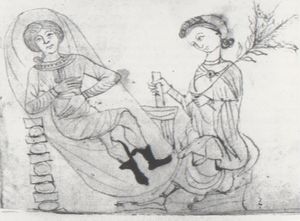Abortifacient

An abortifacient ("that which will cause a miscarriage" from Latin: abortus "miscarriage" and faciens "making") is a substance that induces abortion. Abortifacients for animals that have mated undesirably are known as mismating shots.
Common abortifacients used in performing medical abortions include mifepristone, which is typically used in conjunction with misoprostol in a two-step approach. Oxytocin is commonly used to induce abortion in the second or third trimester. There are also several herbal mixtures with abortifacient claims, though there are reports that they may have caused severe side-effects, including death.
Prostaglandin analogues, such as misoprostol or gemeprost (both synthetic prostaglandin E1 (PGE1) analogues), are often used to terminate pregnancy up to 24 or 60 days of gestation, in combination with mifepristone (a progesterone receptor antagonist) or methotrexate (an antifolate). Misoprostol administered vaginally is more effective than when administered orally. Misoprostol is approved in France under the trade name GyMiso for use with mifepristone for medical abortion. Misoprostol is used off-label with mifepristone for medical abortion in the U.S.. Dinoprostone, given by the extra-amniotic route, can be used for late abortion (second trimester).
Mifepristone is a progesterone receptor antagonist also known as RU-486. It is marketed under the trade name Mifegyne in France and countries other than the U.S., and under the trade name Mifeprex in the U.S. It is used in conjunction with a prostaglandin analogue.
Misoprostol alone is sometimes used for self-induced abortion in Latin American countries where legal abortion is not available, and by people in the United States for whom it is easier or cheaper than a legal abortion in a clinic.
History
In the Bible, many commentators view the ordeal of the bitter water (prescribed for a sotah, or a wife whose husband suspects that she was unfaithful to him) as intended to cause the abortion of a potential bastard. The wife drinks "water of bitterness," which, if she is guilty, causes the abortion or miscarriage of a pregnancy she may be carrying. Others dispute this interpretation, saying that "There is no reason to suppose that the woman was pregnant at the time" and "Final proof of the woman's innocence would be pregnancy, final proof of her guilt would be the 'belly swelling and thigh falling' which possibly describes the prolapsed uterus."
The ancient Greek colony of Cyrene at one time had an economy based almost entirely on the production and export of the plant silphium, considered a powerful abortifacient. Silphium figured so prominently in the wealth of Cyrene that the plant appeared on coins minted there. Silphium, which was native only to that part of Libya, was overharvested by the Greeks and was effectively driven to extinction. The standard theory, however, has been challenged by a whole spectrum of alternatives (from an extinction due to climate factors, to the so-coveted product being in fact a recipe made of a composite of herbs, attribution to a single species meant perhaps as a disinformation attempt).
In aboriginal Australia, plants such as cymbidium madidum, petalostigma pubescens, or Eucalyptus gamophylla were ingested, inserted into the body, or were smoked with Erythropleum chlorostachyum.
As Christianity and in particular the institution of the Catholic Church increasingly influenced European society, those who dispensed abortifacient herbs found themselves classified as witches and were often persecuted in witch-hunts.
Medieval Muslim physicians documented detailed and extensive lists of birth control practices, including the use of abortifacients, commenting on their effectiveness and prevalence. The use of abortifacients was acceptable to some Islamic jurists provided that the abortion occurs within 120 days of conception, the time when the fetus is believed to receive its soul, though others considered the procedure fully prohibited.
In English law, abortion did not become illegal until 1803. English folk practice before and after that time held that fetal life was not present until quickening. (In pregnancy terms, "quickening" is the moment in pregnancy when the pregnant woman starts to feel or perceive fetal movements in the uterus) "Women who took drugs before that time would describe their actions as 'restoring the menses' or 'bringing on a period'." Abortifacients used by women in England in the 19th century (not necessarily safe or effective) included diachylon, savin, ergot of rye, pennyroyal, nutmeg, rue, squills, and hiera picra, the latter being a mixture of powdered aloe and canella.
During the American slavery period, 18th and 19th centuries, cotton root bark was used in folk remedies to induce a miscarriage.
Chat rooms • What links here • Copyright info • Contact information • Category:Root